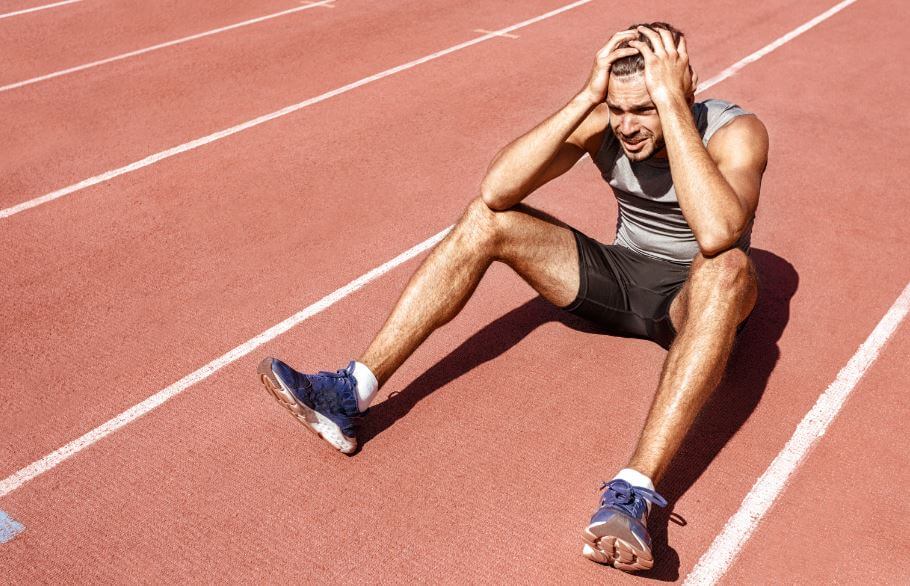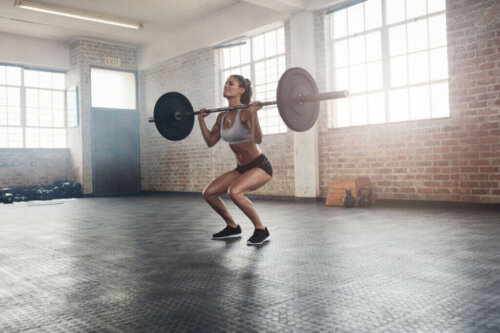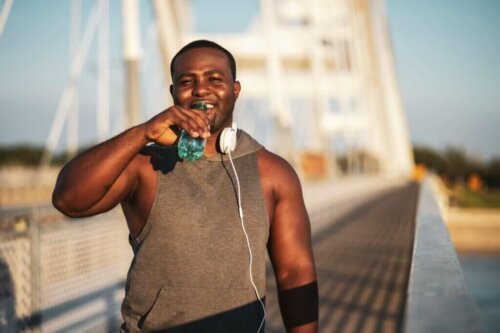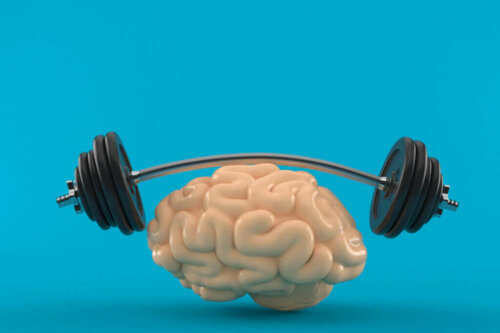Injured Athlete: How to Promote the Recovery Process

It’s important that an injured athlete knows what an injury means for the future. They must also be aware of what the causes are in order to plan a strategy for a fast recovery. In the following paragraphs, we’ll explain how this process can be made easier.
Sports injuries are alterations in the bones, tendons, or muscles that happened during the practice of physical activities. For example, some of the most frequent are the runner’s knee, tennis elbow, pitcher’s shoulder, etc.
These injuries can happen accidentally or due to excessive strain. According to the Municipal Sports Institute, injuries can also occur due to biological alterations in the athlete. This includes a deviation in the spine, infections, lack of calcium in the bones, and other factors.
Athletes can also make training and competition mistakes that lead to injuries. Some of those issues are excessive activity, absence of stretches and warm-ups, problems with their shoes or the game field, and many other situations.
What is the treatment for an injured athlete?
The treatment for a sports injury depends on the severity and type of injury. The most common treatments include anti-inflammatory drugs, immobilization of the affected area, surgery, rehabilitation, and rest.
Likewise, it’s important that the injured athlete can have psychological support. This will help them maintain emotional balance and achieve a faster recovery.
The psychology of the injured athlete
When an injured athlete suffers a trauma of any kind, they begin to have thoughts along the lines of, “Why did this happen to me?”, “What did I do wrong?”, “What if I don’t recover?”, “Will I ever be able to play again?”. This causes a lot of stress and anxiety for them.
The increased stress levels can cause the injury to become worse or cause a relapse. The goal is to reduce the pressure on the player and his negative thoughts about the situation, so they can stay motivated and their recovery is adequate.

It’s important to take into account that, beyond the pain that an injured athlete may feel, it’s necessary to control their cognitive assessment, emotional response, and behavioral response as well. This will help them improve their attention, focus, and motor control.
After the moment of injury, the medicine and physical therapy teams must quickly diagnose the type and level of injury. The goal is to establish an optimal treatment plan for the patient and seek the necessary interventions.
Psychological intervention for rehabilitation
In addition to the physiotherapy work, the psychological intervention also has good results during their discharge. According to a study by the San Antonio Catholic University, it helps to prevent future injuries and makes rehabilitation faster and more motivated.
From a psychological point of view, these are the most common techniques:
- Visualization (pain technique)
- Relaxation
- Coping skills
- Reduction of stress or anxiety
- Social support
To comply with the information above, it’s important that the injured athlete has the support of the technical director, the physical therapist, and their teammates, to accompany him during the improvement process. It’s a hard stage for many athletes; therefore, they should be able to count on all kinds of tools to overcome it.
Stages of rehabilitation of the injured athlete
Within the rehabilitation process, it’s important to know the stages of the injury in order to identify them and be able to help the athlete so he can make progress.
According to Maldonado González (2006), first comes the biological part, in which specialists should assign the necessary exercises and medications for the injury and its recovery. They must also try to get the athlete to adapt again to the work pace.

The next stage is rehabilitation and prevention, which uses the techniques we talked about before. It’s important to follow up on the process so that the athlete can do it with motivation and without fear of the future, whenever they return to their normal routine.
Conclusion
Finally, it’s important that the expert in charge of the injured athlete generates a transdisciplinary intervention plan. This implies not victimizing the patient with the event and also having a plan that helps the athlete to come out of that difficult moment.
Coordination between the biological and mental parts is important so that the athlete continues with the treatment. On the other hand, creating goals and objectives to evaluate the process is very positive, as well as focusing on the athlete’s trust and concept they have of themselves.
It’s important that an injured athlete knows what an injury means for the future. They must also be aware of what the causes are in order to plan a strategy for a fast recovery. In the following paragraphs, we’ll explain how this process can be made easier.
Sports injuries are alterations in the bones, tendons, or muscles that happened during the practice of physical activities. For example, some of the most frequent are the runner’s knee, tennis elbow, pitcher’s shoulder, etc.
These injuries can happen accidentally or due to excessive strain. According to the Municipal Sports Institute, injuries can also occur due to biological alterations in the athlete. This includes a deviation in the spine, infections, lack of calcium in the bones, and other factors.
Athletes can also make training and competition mistakes that lead to injuries. Some of those issues are excessive activity, absence of stretches and warm-ups, problems with their shoes or the game field, and many other situations.
What is the treatment for an injured athlete?
The treatment for a sports injury depends on the severity and type of injury. The most common treatments include anti-inflammatory drugs, immobilization of the affected area, surgery, rehabilitation, and rest.
Likewise, it’s important that the injured athlete can have psychological support. This will help them maintain emotional balance and achieve a faster recovery.
The psychology of the injured athlete
When an injured athlete suffers a trauma of any kind, they begin to have thoughts along the lines of, “Why did this happen to me?”, “What did I do wrong?”, “What if I don’t recover?”, “Will I ever be able to play again?”. This causes a lot of stress and anxiety for them.
The increased stress levels can cause the injury to become worse or cause a relapse. The goal is to reduce the pressure on the player and his negative thoughts about the situation, so they can stay motivated and their recovery is adequate.

It’s important to take into account that, beyond the pain that an injured athlete may feel, it’s necessary to control their cognitive assessment, emotional response, and behavioral response as well. This will help them improve their attention, focus, and motor control.
After the moment of injury, the medicine and physical therapy teams must quickly diagnose the type and level of injury. The goal is to establish an optimal treatment plan for the patient and seek the necessary interventions.
Psychological intervention for rehabilitation
In addition to the physiotherapy work, the psychological intervention also has good results during their discharge. According to a study by the San Antonio Catholic University, it helps to prevent future injuries and makes rehabilitation faster and more motivated.
From a psychological point of view, these are the most common techniques:
- Visualization (pain technique)
- Relaxation
- Coping skills
- Reduction of stress or anxiety
- Social support
To comply with the information above, it’s important that the injured athlete has the support of the technical director, the physical therapist, and their teammates, to accompany him during the improvement process. It’s a hard stage for many athletes; therefore, they should be able to count on all kinds of tools to overcome it.
Stages of rehabilitation of the injured athlete
Within the rehabilitation process, it’s important to know the stages of the injury in order to identify them and be able to help the athlete so he can make progress.
According to Maldonado González (2006), first comes the biological part, in which specialists should assign the necessary exercises and medications for the injury and its recovery. They must also try to get the athlete to adapt again to the work pace.

The next stage is rehabilitation and prevention, which uses the techniques we talked about before. It’s important to follow up on the process so that the athlete can do it with motivation and without fear of the future, whenever they return to their normal routine.
Conclusion
Finally, it’s important that the expert in charge of the injured athlete generates a transdisciplinary intervention plan. This implies not victimizing the patient with the event and also having a plan that helps the athlete to come out of that difficult moment.
Coordination between the biological and mental parts is important so that the athlete continues with the treatment. On the other hand, creating goals and objectives to evaluate the process is very positive, as well as focusing on the athlete’s trust and concept they have of themselves.
All cited sources were thoroughly reviewed by our team to ensure their quality, reliability, currency, and validity. The bibliography of this article was considered reliable and of academic or scientific accuracy.
- Abenza. L (2010) Psicología y lesiones deportivas: un análisis de factores de prevención, rehabilitación e intervención psicológica. Universidad Católica San Antonio [tesis online], Murcia – España.
- Hontoria Gonzáles. L, Gonzáles Llorente. V, Alvarez Fidalgo. M, Calvo Manzano. J, Chamorro Sánchez. P, Juanes Morales. M y Montoya Miñano . J (s.f) Manual de Lesiones Deportivas. Instituto Municipal del Deporte, Colombia. ISBN: 84-605-6226-3. Recuperado de: http://www.deposoft.com.ar/repo/preparacion%20fisica/lesiones%20y%20salud/manual_lesiones_deportivas.pdf
- Maldonado González, R. (2006). Oferta y demanda de actividad física: Proceso de recuperación de un deportista lesionado. Recuperado de: http://www.munideporte.com/imagenes/documentacion/ficheros/20070102160843Ponencia_rafael_maldonado.pdf
This text is provided for informational purposes only and does not replace consultation with a professional. If in doubt, consult your specialist.








